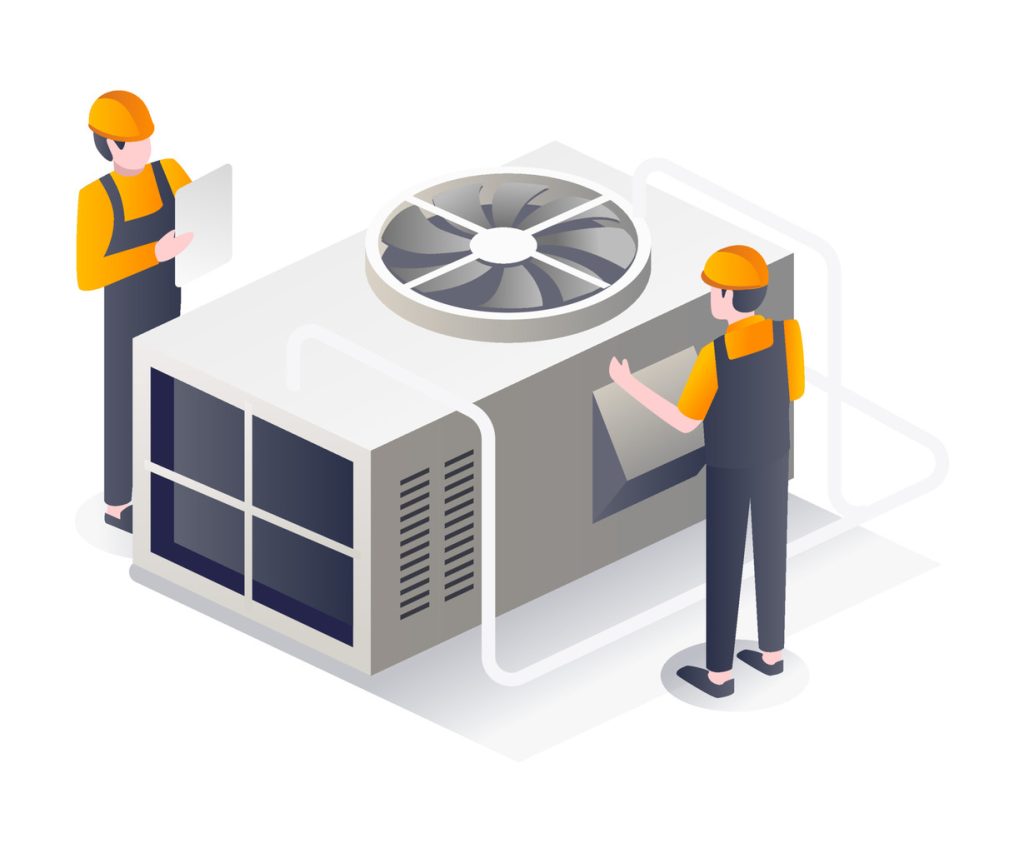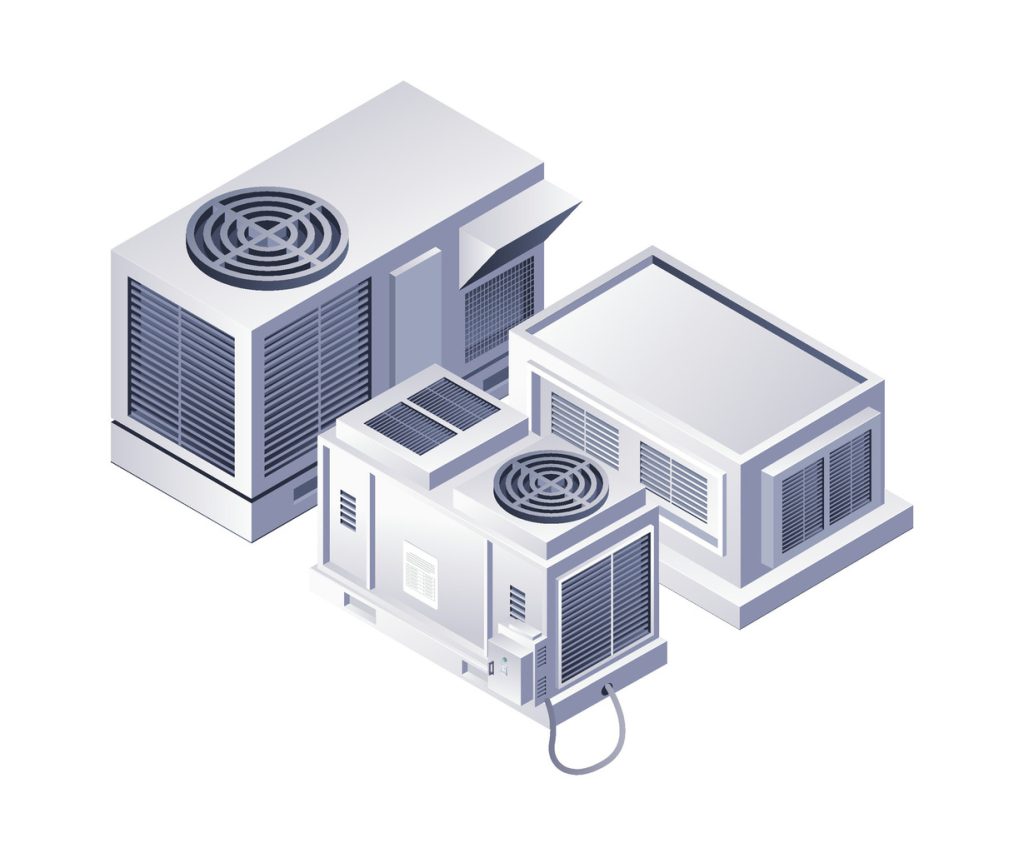The Ultimate Guide to HVAC: Optimizing Business Performance

Every business needs reliable climate control to thrive. Modern heating, cooling, and ventilation systems do more than adjust temperatures—they create environments where productivity and customer satisfaction flourish. This guide reveals how optimized climate management drives operational success while cutting costs.
At its core, these systems balance three elements: thermal comfort, air circulation, and humidity control. From compact heat pumps to advanced filtration units, the right equipment maintains ideal conditions inside buildings year-round. Innovations like smart thermostats now let businesses automate adjustments while tracking energy use.
Efficient systems directly impact indoor air quality—a critical factor for employee health and customer retention. Proper ventilation cycles out pollutants and brings in fresh air, reducing headaches and fatigue. Studies show workplaces with optimized airflow see 11% higher productivity rates.
Energy efficiency isn’t just eco-friendly—it’s budget-smart. Upgrading outdated units can slash utility bills by 30% or more. For example, modern heat pumps provide both heating and cooling with 50% less energy than traditional systems. These savings compound over time, freeing resources for growth initiatives.
From early steam radiators to today’s AI-driven solutions, climate control technology keeps evolving. Businesses that adopt these advancements gain a competitive edge through improved comfort, sustainability, and operational reliability.
Key Takeaways
- Climate control systems regulate temperature, airflow, and moisture for optimal indoor conditions
- Advanced ventilation improves air quality, boosting health and productivity
- Energy-efficient upgrades reduce operational costs by up to 30%
- Smart technology enables precise environmental adjustments and monitoring
- Modern systems directly contribute to customer retention and brand reputation
Understanding HVAC Basics and History

From ancient ice houses to smart sensors, environmental regulation has shaped how businesses operate. Modern solutions combine precise engineering with decades of innovation to balance comfort and functionality.
What Powers Indoor Environments?
Heating, Ventilation, and Air Conditioning (HVAC) systems manage three core elements: thermal stability, airflow distribution, and moisture levels. These systems use equipment like heat pumps, ductwork, and filters to circulate clean air while removing excess humidity. Proper ventilation ensures 15-20 cubic feet of fresh air per minute reaches occupants, reducing pollutant buildup by 60% compared to natural airflow methods.
From Steam to Smart Technology
Willis Carrier’s 1902 invention revolutionized industries by introducing mechanical cooling. Early systems used ammonia compressors and water-cooled condensers, enabling temperature control in printing plants and theaters. By the 1950s, compact units made climate management accessible for commercial buildings.
Modern advancements integrate zoning controls and variable-speed motors. For example, today’s air handling units adjust airflow based on occupancy sensors, cutting energy waste by 25%. Unlike window air conditioners that recirculate stale air, centralized systems combine heating, cooling, and filtration in one streamlined operation.
Natural ventilation relies on openings and wind patterns, achieving 0.35 air changes per hour. Mechanical alternatives deliver 5-10 changes hourly, ensuring consistent indoor quality. This shift underscores why 82% of upgraded facilities report fewer employee sick days.
Optimizing HVAC System Performance
Strategic upgrades to environmental controls unlock hidden value across commercial operations. By aligning equipment performance with occupancy patterns, businesses achieve measurable gains in sustainability and cost management.
Enhancing Energy Efficiency
Modern climate systems slash energy use through adaptive technologies. Programmable thermostats adjust temperatures during off-peak hours, while variable-speed compressors reduce electricity consumption by 40% compared to single-speed models. Energy recovery ventilators reuse 80% of thermal energy from exhaust air, minimizing heating and cooling demands.
Reducing Operating Costs
Proactive maintenance schedules prevent costly breakdowns. Changing air filters monthly improves airflow, cutting fan energy use by 15%. A Midwest retail chain saved $18,000 annually after upgrading to zoned controls that adjust temperatures per department. Refrigerant leak detection systems further reduce repair expenses by 30%.
Improving Customer Satisfaction
Consistent thermal comfort keeps patrons engaged longer. Stores with balanced humidity levels (40-60% RH) report 23% higher customer retention. Advanced filtration in a Texas hotel reduced allergy complaints by 62%, directly boosting online ratings. Real-time air quality monitors display CO₂ levels, building trust through transparency.
“Optimized climate controls delivered 9-month payback periods through energy savings alone.” – Facility Manager Quarterly Report
- Install occupancy sensors to activate equipment only when needed
- Seal ductwork gaps to prevent 20-30% energy loss
- Use smart sensors to balance humidity without overcooling spaces
HVAC Components and Technical Insights

Behind every comfortable indoor space lies a network of precision-engineered parts working in unison. Modern climate systems combine mechanical innovation with digital intelligence to balance temperature, airflow, and moisture levels efficiently.
Core Elements of Climate Systems
Compressors act as the system’s heart, pressurizing refrigerant to move heat between indoor and outdoor environments. Paired with condenser coils, they release absorbed heat outside during cooling cycles. Evaporator coils inside buildings absorb warmth from air, while air handling units distribute conditioned air through duct networks.
The refrigeration cycle operates in four phases:
- Refrigerant gas compresses, increasing temperature and pressure
- Hot gas releases heat through condenser coils, becoming liquid
- Expansion valves reduce pressure, cooling the refrigerant
- Evaporator coils absorb indoor heat, restarting the cycle
Operational Synergy in Modern Systems
Advanced filtration directly impacts performance. High-efficiency particulate air (HEPA) filters trap 99.97% of allergens, while properly sealed ducts prevent 15-20% energy loss from leaks. Variable-speed blowers adjust airflow based on real-time sensor data, maintaining consistent temperatures without overworking equipment.
Smart control circuits now optimize operations automatically. Occupancy sensors reduce cooling in empty rooms, while humidity detectors activate dehumidification before moisture accumulates. Integrated systems link ventilation rates to CO₂ levels, ensuring fresh air circulates when spaces fill with people.
Facilities conducting biannual technical assessments report 40% longer equipment lifespans.
Regular maintenance checks prevent component degradation. Cleaning condenser coils improves heat transfer efficiency by 30%, and replacing worn fan belts reduces motor strain. These practices not only lower repair costs but also ensure uninterrupted climate control for businesses.
Commercial vs Residential HVAC Applications
Commercial spaces and homes require distinct approaches to maintaining indoor comfort efficiently. While both markets prioritize temperature control and air quality, their technical demands diverge sharply in scale, complexity, and regulatory requirements.
Design Differences in Climate Systems
Commercial buildings typically use ducted systems with multiple zones, while residential setups often employ compact ductless units. A 50,000 sq. ft. office might need rooftop units with 20+ tons of cooling capacity, whereas a 2,500 sq. ft. home operates efficiently with a 3-ton split system.
| Factor | Commercial | Residential |
|---|---|---|
| Equipment Size | 10-100+ tons | 1.5-5 tons |
| Installation Time | 4-12 weeks | 1-3 days |
| Air Changes/Hour | 8-12 | 4-6 |
Retrofitting older structures presents unique challenges. A 1920s hotel renovation in Chicago required custom ductwork to preserve architectural integrity while achieving modern airflow standards. Residential upgrades often focus on integrating smart thermostats with existing heating systems.
Market-Specific Considerations
Commercial projects must meet strict ASHRAE 90.1 energy codes, requiring detailed load calculations and fire-rated duct insulation. Homeowners prioritize quiet operation and aesthetics, driving demand for concealed mini-split units.
Service expectations also differ. Restaurants need quarterly filter changes to manage grease buildup, while homes typically require biannual maintenance. A Phoenix-based mall reduced cooling costs by 18% after switching to variable refrigerant flow systems tailored for high-traffic areas.
“Commercial retrofits demand 30% more planning than new installations due to space constraints.” – Mechanical Contractors Association Report
Energy Efficiency and Cost Reduction Strategies

Energy waste drains $40 billion annually from commercial operations. Smart climate management turns this loss into measurable savings through targeted upgrades and intelligent monitoring.
Maximizing Savings with Efficient Systems
Modern air conditioning systems like split units reduce energy use by 40% compared to outdated models. Variable refrigerant flow technology adjusts cooling output to match room occupancy, cutting costs in high-traffic areas. A Chicago office complex slashed bills by 28% after installing zoned controls and upgraded ventilation.
Three strategies deliver immediate results:
- Automated temperature setbacks during closed hours
- Monthly filter replacements to maintain airflow efficiency
- Smart sensors that prevent overcooling in unused spaces
Real-time monitoring platforms now track heating systems and refrigeration cycles simultaneously. These tools flag anomalies like duct leaks or compressor strain before they escalate. A Department of Energy study found businesses using these systems achieved 9-month payback periods through energy savings alone.
“Integrating solar-powered air handling units reduced our annual cooling costs by 34%.” – National Facilities Management Association Report
Regular maintenance extends equipment lifespan while preventing costly breakdowns. Sealing ductwork gaps improves efficiency by 15%, and upgrading to ENERGY STAR-certified units qualifies many businesses for tax incentives. These combined approaches create sustainable cost reductions without compromising indoor air quality.
Technological Innovations and Future Trends in HVAC
The next frontier in climate management blends artificial intelligence with sustainable energy solutions. Cutting-edge systems now learn occupancy patterns and adjust settings autonomously, reducing energy waste while maintaining precise comfort levels. These advancements position businesses to meet both environmental goals and operational demands.
Intelligent Control Networks
Modern building management systems integrate with smart thermostats and IoT sensors to optimize performance. A Boston office tower reduced cooling costs by 19% using machine learning algorithms that predict peak occupancy. Key innovations include:
- Self-diagnosing equipment that alerts technicians to issues before breakdowns occur
- Wireless air quality monitors adjusting ventilation based on real-time CO₂ readings
- Zoned controls directing heating or cooling only to occupied areas
| Feature | Traditional Systems | Smart Systems |
|---|---|---|
| Response Time | 24-48 hours | Instant adjustments |
| Energy Savings | 12-18% | 22-35% |
| Maintenance Costs | $0.18/sq.ft. | $0.09/sq.ft. |
Renewable Energy Integration
Solar-powered heat pumps now provide 60% of heating needs for Midwest warehouses, cutting fossil fuel reliance. Geothermal systems leverage stable ground temperatures to boost efficiency, while advanced refrigerants like R-32 reduce global warming potential by 75% compared to older alternatives.
“Hybrid systems combining solar panels with air-source heat pumps achieve 50% faster ROI than conventional installations.” – 2024 Clean Energy Report
Emerging technologies address humidity control through desiccant-enhanced ventilation, maintaining ideal moisture levels without overcooling spaces. These solutions prove particularly effective in humid regions, where they slash dehumidification energy use by 40%.
Conclusion
Modern climate control strategies have evolved into essential business tools that balance comfort with operational excellence. This guide demonstrates how optimized heating and cooling systems drive productivity through precise temperature management and enhanced indoor air quality. From energy recovery ventilators to AI-driven sensors, today’s solutions deliver measurable returns through reduced utility costs and healthier environments.
Businesses that adopt these solutions gain measurable advantages. Smart controls cut energy waste by 35%, while advanced filtration maintains cleaner air with 60% fewer pollutants. Upgraded heat pumps now provide dual heating/cooling functions at half the operational cost of traditional units.
The future lies in adaptive technologies. Solar-integrated systems and machine learning algorithms will redefine efficiency standards, offering real-time adjustments based on occupancy patterns. Facilities embracing these innovations report faster ROI and stronger customer loyalty through consistent comfort.
Proactive evaluation of current climate systems unlocks untapped potential. Partnering with certified professionals ensures proper sizing, maintenance schedules, and technology integration. Businesses prioritizing these upgrades position themselves for long-term success in an increasingly competitive market.

